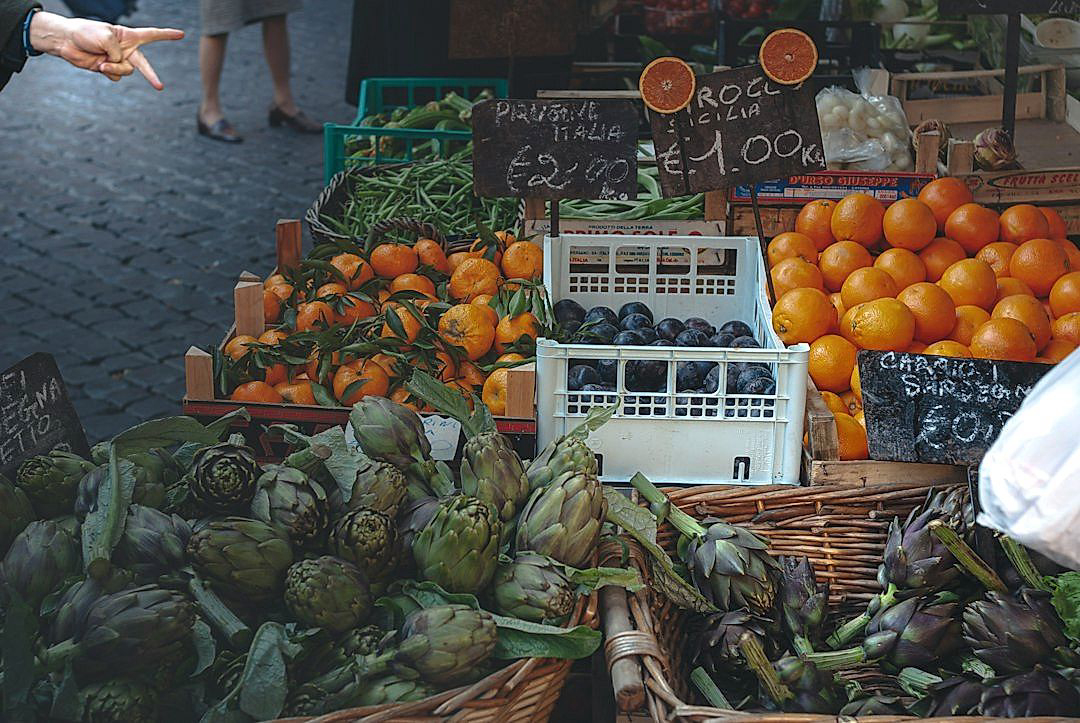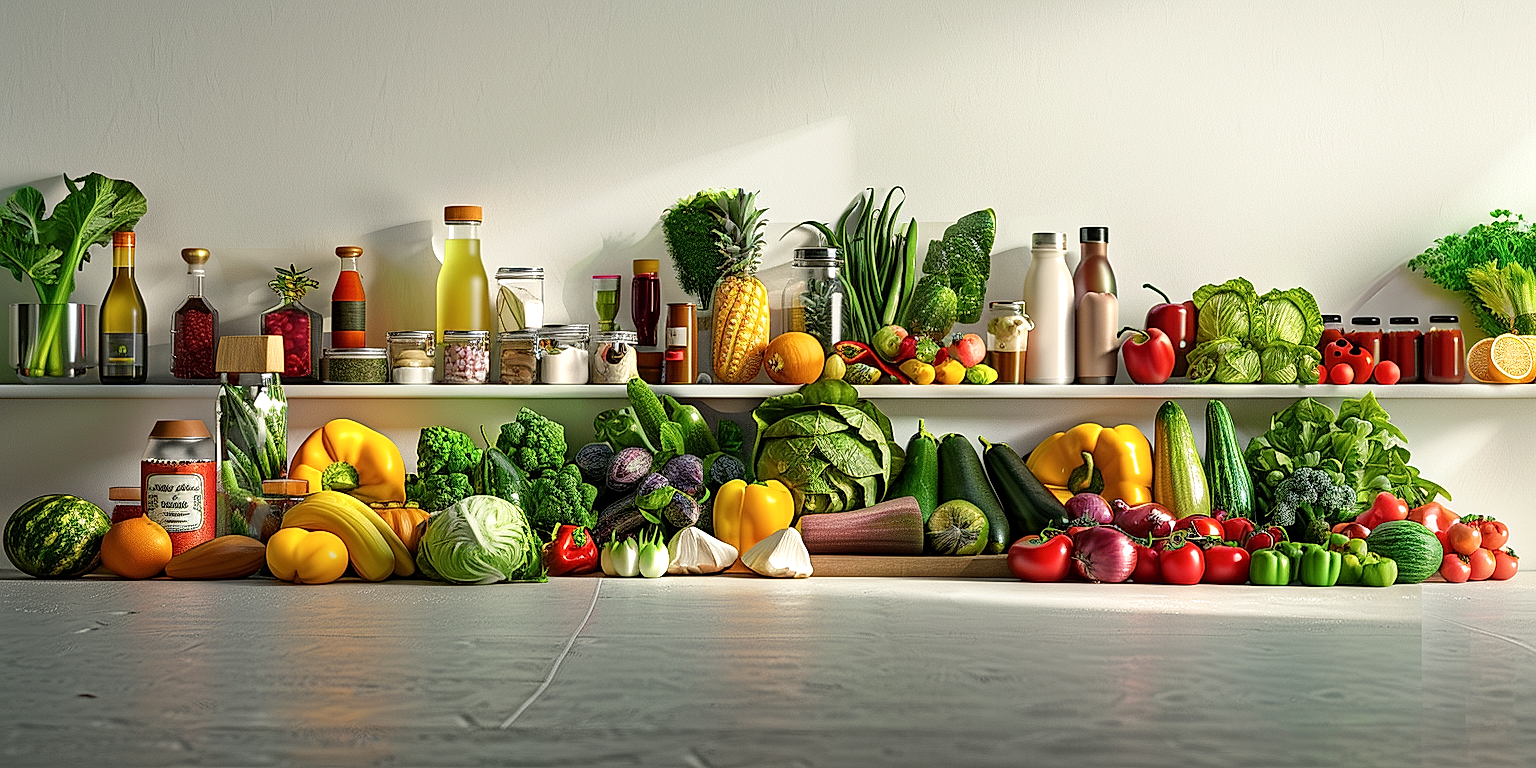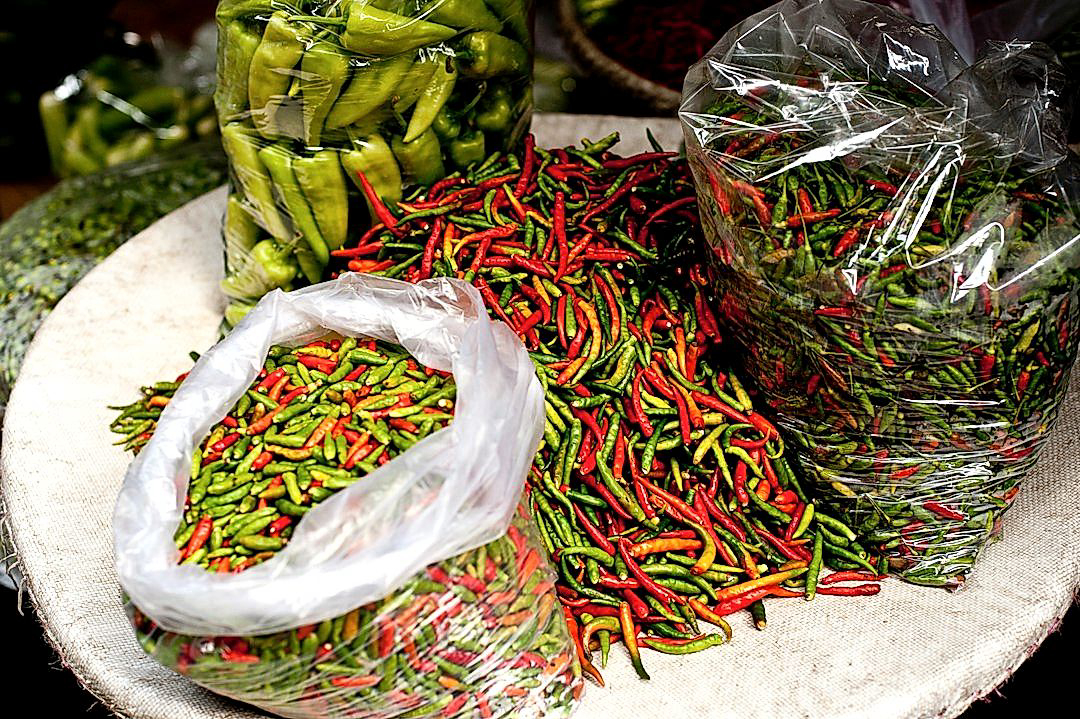Merchandising in the produce industry requires strategic planning and competence.
Proper layout and presentation in the produce department can strongly influence consumer purchases.
This crossroads of sales and aesthetics is not just about making the produce look attractive.
It’s also about facilitating a customer-friendly shopping experience that maximizes revenue.
It is crucial to understand certain aspects of merchandising and how they impact sales.
In the following sections, we will delve into the nuances of effective merchandising layouts that have proven successful in the produce sector.
Insights Into Effective Produce Merchandising Layouts
The method of grouping similar items together in produce merchandising provides a user-friendly layout that enhances the shopping experience for customers.
A well-organized, easy-to-navigate layout is a key attribute that can greatly influence a customer’s perspective of your store.
This merchandising method reduces customer frustration by making it easier for them to locate the items they need.
A systematic, logical order in the arrangement of your produce provides a clear path for customers to follow while shopping.
Positioning like-items together also enables customers to make comparisons among similar products before making a purchase.
It can help to place complementary products near each other to inspire impulse purchases.
For example, positioning strawberries near whipped cream can lead to increased sales of both items.
Grouping similar items also help to create a consistent visual flow and balance in the store displays, providing an attractive and inviting shopping environment.
Employing this method reduces the time it takes the customer to locate and select their preferred products, enhancing efficiency of their shopping journey.
Over time, this grouping strategy designs a layout that customers become familiar with, leading to quicker, more efficient shopping trips.
This familiarity can increase customer loyalty and return visits because they know they will have a productive shopping experience.
A well-organized layout makes stocking and inventory management easier for employees, increasing operational efficiency as well.
Overall, creating a shopping environment where it is easy for customers to locate items they need not only encourages higher levels of customer satisfaction, but it also increases the chances of selling more items through effective product exposure.
Quality merchandising is constantly evolving and adapting to customer behaviors and preferences, and the grouping of similar items is a fundamental feature of an effective produce layout.
Through strategic organization, it is possible to guide customers through the store in a way that is mutually beneficial, offering them a productive shopping experience while maximizing store profits.
Therefore, understanding how the grouping of similar items can impact your store layout is crucial for success in produce merchandising.
2. Promote Seasonal Varieties Front and Center
One significant aspect of creating an effective produce merchandising layout is showcasing seasonal varieties.
This strategy serves a twofold purpose: it both draws attention to the produce section and highlights items that are fresh and at their peak.
Consumers tend to be drawn to seasonal products’ visual appeal, freshness, and taste superiority compared to their off-season counterparts.
Thus, when trying to increase sales and enhance customer experience, it’s critical to promote seasonal varieties front and center.
Placing these items in prominent positions, such as entry points and aisle ends, is known to increase impulse purchases.
The colorful aesthetics of seasonal fruits and vegetables, when placed creatively, add to the overall look of the Store.
Therefore, arranging these products front and center is not only beneficial from a sales standpoint, but also for enhancing the overall shopping experience and atmosphere.
Changes in seasons naturally bring about aesthetic changes, which can be utilized to keep the layout dynamic and engaging.
Promoting seasonal varieties is also a great method to provide customers with nutritional information about the health benefits of consuming seasonally available produce.
This enables the customers to make informed decisions about their purchases while educating them about the benefits of eating seasonal produce.
Moreover, featuring seasonal products prominently can lead to an expanded customer base as more health-conscious individuals are attracted to the store.
Yet, effectively promoting seasonal varieties requires constant effort and flexibility because product availability is often unpredictable.
You need to continually stay updated on which seasonal items are readily available and which ones are nearly out of stock.
Although it may be challenging at times, the promotion of seasonal varieties through a front and center approach will undoubtedly make a significant impact on your store’s sales and overall appeal.
In doing so, you not only sell more products but also promote a healthier lifestyle among your customers.
3. Use Lighting to Enhance Product Color, Freshness
One important factor that can significantly transform your merchandise layout effectiveness is the use of lighting.
Correctly positioned and chosen lighting can enhance fruit and vegetable colors, making the produce appear even fresher to customers’ eyes.
From premium supermarkets to smaller grocery stores, the principle of highlighting items with lighting is implemented widely.
By illuminating your produce correctly, you not only highlight their natural colors but also create a visually appealing display that catches the shopper’s eye, encouraging them to make a purchase.
Keep in mind, however, that using the right type of lighting adds to produce attractiveness without producing heat that could harm fresh items.
Specific lightings like LED lighting are recommended for this purpose due to their low heat output and the fact that they emit light waves that bring out the distinct colors in fruits and vegetables.
By enhancing the natural colors of the produce with lighting, you’re essentially making the products look more appealing and enticing to customers.
Green leafy vegetables can look a darker, more appealing shade of green under the right lighting, while fruits like apples and oranges can look more vibrant and fresh.
Lighting plays a significant role in maintaining the perceived freshness of the produce, ultimately influencing the buying decision of the consumer.
Adding to this, well-thought-out lighting provides depth to your produce display, creating visual interest and harmony.
Consider using different lighting techniques and levels for different products to create contrast in your display area.
Remember, the end goal is to use light in a way that makes each product look its best and, as a result, maximizes sales.
Light strategically placed at varying angles can add a dimension of depth to the merchandise, enhancing its overall aesthetic appeal.
Remember to regularly adjust and check the lighting to maintain a consistent, appealing look as this is a key aspect of an effective merchandising layout.
Therefore, investing in quality lighting solutions and positioning them optimally will go a significant way in enhancing the perceived worth of your fresh produce and, in turn, boost customer purchases.
4. Make Organic Produce a Visible Highlight
In retail, perception and visibility often drive customer purchasing decisions and it’s no different in the produce department. Efficient merchandising for organic produce is one of the keys to increasing sales and customer satisfaction.
When a customer walks into the produce section, what they see first can be a significant factor in their buying behavior. Spotlighting organic produce can significantly influence a customer’s decision to explore and purchase from this selection.
Creating dedicated areas for organic produce not only brings attention to the products but also provides a sense of exclusiveness and value that customers are drawn to.
Location is key when it comes to arranging the organic produce stand. Placing organic produce near the beginning of the path that most customers will take can significantly increase their visibility.
While designing the layouts for organic produce sections, retailers can also consider adding shelf talkers and small signposts highlighting the benefits of organic produce.
Another effective tactic is to group related organic products together to facilitate better shopping experience.
Organic produce offers numerous health benefits compared to their conventional counterparts, hence, educating customers about these benefits and the value they are getting from organic products is vital.
Creating separate, clearly-marked sections for organic versus traditional fruits and vegetables will make it easier for customers who prioritize organic products to find what they are looking for.
Marketing materials, like signs or labels, should also be bright and visually appealing to draw customers’ attention to the organic produce section.
Tools like special display stands, organic certification marks or emblems, and information about the farms/brands could further enhance the attractiveness of organic produce.
While price can be a deterrent for some when it comes to organic produce, strategic positioning and presentation can significantly give a boost to the sales.
Using granular data from past performance to optimize product placement can also be instrumental in driving organic food sales.
Retailers can further boost sales by featuring new and unique products in the organic section to create a sense of novelty and excitement.
In summary, well-organized organic fruit and vegetable sections in supermarkets can significantly enhance the shopping experience AND encourage healthier, more conscious buying decisions among customers.
5. Maintain clean, well-stocked displays for appeal.
Maintaining clean, well-stocked displays is an essential aspect of any produce merchandising layout.
The appeal and attractiveness of display stands are directly influenced by their cleanliness and stocking levels.
Consumers are naturally drawn towards neat, orderly, and well-arranged displays.
Maintaining well-arranged and detail-oriented displays encourage customers to make purchases, leading to increased sales.
This enhances the overall consumer shopping experience and the store’s aesthetic value.
Furthermore, well-arranged and adequately stocked displays reflect positively on the store’s overall cleanliness and hygiene standards.
This can significantly influence the perceived quality and freshness of the produce being sold.
Ensuring items are well-arranged and restocked regularly also contributes to achieving a smooth customer flow throughout the store.
This is because it eliminates unnecessary customer confusion and allows for easy product visibility and accessibility.
In terms of presentation, the produce should be displayed in a logical succession that aligns with the buyer’s shopping cycle.
This subsequently makes the shopping process more efficient and enjoyable for customers.
Minor details such as removing damaged items, cleaning spills, or negligence in restocking can be detrimental to the overall display appeal.
For that reason, it’s essential for staff to regularly inspect these areas for any necessary adjustments.
Training staff to routinely manage and maintain the store layout also reinforces best practices for visual merchandising.
Overall, store cleanliness and well-managed displays contribute significantly towards building a strong customer impression and reinforcing the store’s image.
By incorporating all these insights, a store can optimize its produce merchandising layout for increased customer attraction and retention.
The Bottom Line
Without a doubt, the successful marketing and display of a grocery store’s produce can make a significant difference in its business, influencing the buying habits of its customers.
By grouping similar items, promoting seasonal varieties, utilizing appropriate lighting, highlighting organic items, and maintaining clean, well-stocked displays, a grocery store can effectively push its produce to the forefront of its customers’ minds and shopping plans.
Therefore, implementing these strategies will not only make shopping a more appealing experience for the customers but also increase the profitability of the grocery store significantly.
This process is a testament to the fact that a keen understanding and execution of effective produce display can truly turn fruits and vegetables into the stars of the grocery store.




